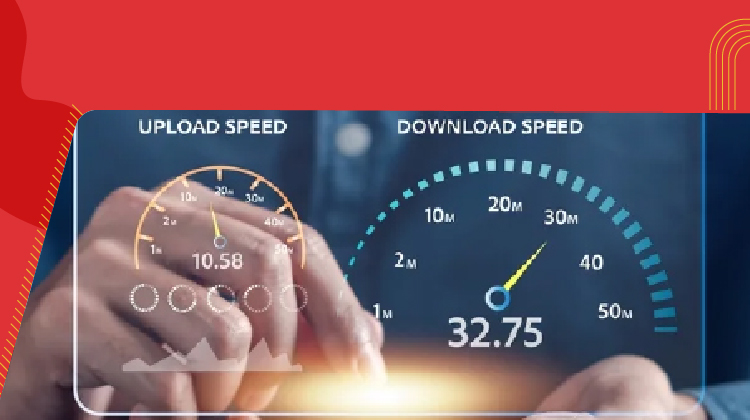Evolution of broadband technology
Thursday, Feb 13, 2025 · 5 minutes


EVOLUTION OF BROADBAND TECHNOLOGY
Thursday, Feb 13, 2025 · 5 minutes
In the modern era, where technology plays a significant role in our daily lives, broadband internet has become an essential part of how we connect and communicate. From the early days of dial-up internet to today's lightning-fast fiber-optic networks, the evolution of broadband technology has been nothing short of remarkable. Let's take a journey through time to explore how broadband technology has developed and revolutionized the way we access information and stay connected by understanding which internet connection technology is not considered broadband.
In this article, we will delve into what is broadband technology, and what is wireless broadband technology, explore the types of broadband connections available, discuss the history of broadband, and identify which technology is not a form of broadband to help us differentiate.
Broadband technology refers to high-speed internet access that is always on and allows for faster data transmission compared to traditional dial-up connections. It enables users to stream videos, download large files, and browse the internet seamlessly without experiencing lag or interruptions. There are several types of broadband connections available, each offering different speeds and technologies to suit the needs of users. Let's take a closer look at the common types of broadband connections:
The history of broadband technology can be traced back to the early days of the Internet when dial-up connections were the norm. As technology advanced, the need for faster internet speeds grew, leading to the development of broadband connections. In the 1990s, DSL technology emerged, providing users with faster internet access over existing phone lines. Cable internet soon followed, offering increased speeds and reliability. Fiber optic broadband later revolutionized the industry with its unparalleled speed and performance.
The concept of broadband internet can be traced back to the late 20th century when telecommunications companies began exploring ways to deliver high-speed internet access to consumers. Dial-up internet, which relied on a telephone line to connect to the internet, was slow and limited in bandwidth. Broadband technology promises faster speeds and a more stable connection, making it ideal for streaming media, online gaming, and other data-intensive activities.
In the early 2000s, digital subscriber line (DSL) and cable internet emerged as popular broadband options for consumers. DSL uses existing telephone lines to deliver internet access, while cable internet utilizes cable TV infrastructure to provide high-speed connectivity. These technologies offered significant speed improvements over dial-up internet and paved the way for the widespread adoption of broadband services.
As the demand for faster and more reliable internet continued to grow, fiber optic technology entered the scene. Fiber-optic cables, made of thin strands of glass or plastic, transmit data using light signals, resulting in incredibly fast internet speeds. Companies like ACT Fibernet have been at the forefront of deploying fiber-optic networks, offering speeds of up to 1 Gbps to residential and commercial customers.
When looking for answers to “which internet connection technology is not considered broadband,” it's important to note that dial-up internet is not considered a form of broadband connection. Dial-up operates through a modem and telephone line, utilizing analog signals to transmit data. While it was popular in the early days of the Internet, dial-up is significantly slower than broadband connections and is no longer commonly used.
Looking ahead, the future of broadband technology appears to be filled with exciting possibilities. The rollout of 5G networks promises to deliver even faster internet speeds and lower latency, making it ideal for a wide range of applications, including autonomous vehicles and smart cities. Additionally, advancements in satellite internet technology, such as SpaceX's Starlink project, aim to bring high-speed connectivity to remote and underserved areas around the world.
Are you tired of slow internet speeds and constant disruptions to your online activities? It's time to make the switch to ACT Broadband and experience the power of Fibernet technology. With ACT Broadband, you can enjoy lightning-fast speeds, seamless connectivity, and unparalleled reliability for all your online needs. Say goodbye to buffering, lagging, and dropped connections - ACT Broadband has got you covered.
In conclusion, the evolution of broadband technology has been a remarkable journey, transforming the way we access information, communicate, and conduct business. From the early days of dial-up internet to the lightning-fast speeds of fiber-optic networks, broadband technology has come a long way. As we look to the future, the possibilities are endless, and one thing is certain – broadband technology will continue to shape the way we live, work, and play in the digital age.
59

The New Social: How High-Speed Internet is Redefining 'Quality Time' with Friends and Family
Read more205

How ACT SmartWi-Fi is Redefining Home Internet in 2025: The Age of AI-Powered Seamless Connectivity
Read more98

From Bandwidth to Intelligence: How AI Is Redefining Business Demands from ISPs
Read more
A referral link has been sent to your friend.
Once your friend completes their installation, you'll receive a notification about a 25% discount on your next bill
![]() Please wait while we redirect you
Please wait while we redirect you

![]() One of our representatives will reach out to you shortly
One of our representatives will reach out to you shortly

One of our representatives will reach out to your shortly
![]() Please wait while we redirect you
Please wait while we redirect you

Please enter your registered phone number to proceed

Please enter correct OTP to proceed


Dear customer you are successfully subscribed
Please wait while we redirect you

Your ACT Shield subscription has been successfully deactivated

Dear user, Your account doesn't have an active subscription

Dear customer Entertainment pack is already activated.
Please wait while we redirect you